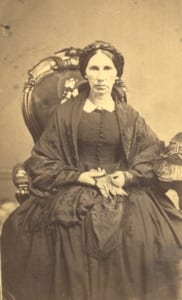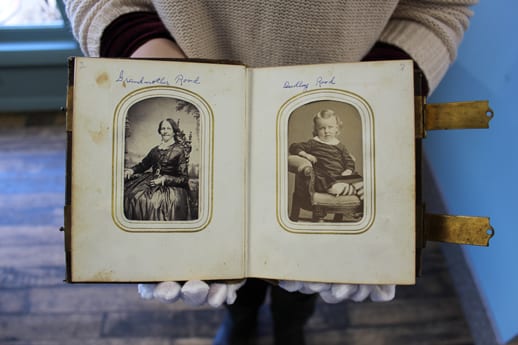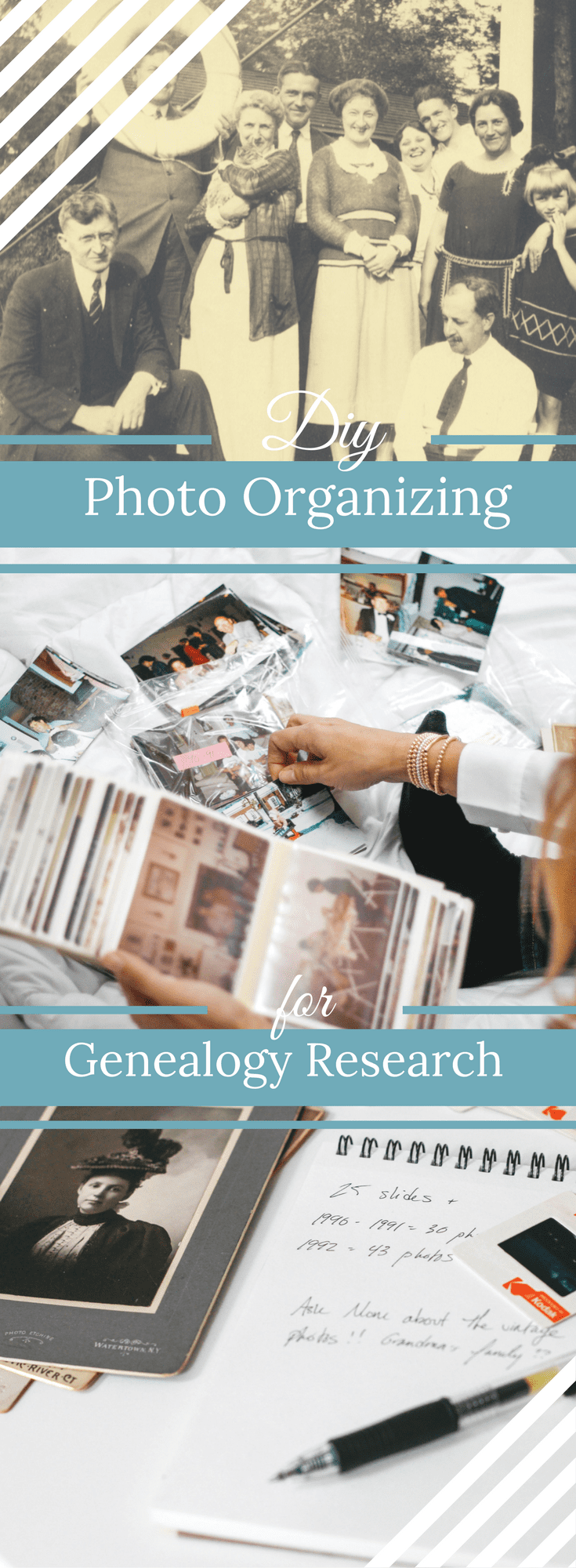We’re in the business of storytelling and every day thousands of family photos pass through our doors. From hard drives full of digital photos to be organized to pristine collections of glass-plate negatives from the 1890’s – every project has a history behind it.
Your family history is a powerful story to tell, but it can be complicated to unravel. Photo organizing can make a genealogy project easier to manage and put you on the right research path. Our experts have all the tips you need to get started organizing your family photos and bring a meaningful visual element to your genealogy projects.
Organizing physical family photos for genealogy & digitizing:
If you’re just getting started with your physical family photos, we can’t recommend enough the value of taking the time to sort and organize them before making digital copies. The struggle to pare down thousands of digital images with no initial framework can derail your genealogy research before it truly begins.
Start by sorting your photos into family branches. Once you have master groups, you can then begin to sort down chronologically and fill in missing information as you further your genealogy research.
Tips for working with vintage family photos:
- Wear gloves. The older the photo, the more susceptible it is to damage.
- Separate groups of photos into archival safe plastic bags to keep them organized during digitizing.
- For long-term storage, invest in weatherproof containers and archival quality storage boxes.
Tips for working with non-standard formats:
- Glass plate negatives, slides and other transparencies are harder to preview and sort but worth the effort. Invest in or rent a lightbox to view transparencies.
- Vintage albums and scrapbooks are incredibly fragile. Touch them as little as possible, especially if the binding is loose, and put them high on your list of digitizing priorities.
- This work will help prepare you for working with your collection after everything is digital and help you stay organized as you begin to accumulate ancestry and genealogy documents during your research.

Organizing digital family photos for genealogy research:
It’s easy to distinguish between contemporary and ancestral family photos, and the process of organizing your digital photos is the same as your physical ones – it’s just done on your computer. We recommend starting with the master family folder and creating sub-folders within them. This is the file structure from my personal genealogy research:
Ancestral Eames Family Photos
- Thomas Eames (1618-1680)
- Nathaniel Eames ( b. 1669 – son of Thomas & Mary Paddleford, m. Anna ?)
- Daniel Eames ( b. 1712 – son of Nathaniel & Anna, m. Silence Leland)
- Daniel Eames (b. 1740 – son of Daniel & Silence, m. Mary Cutler)
- Daniel (b. ? – son of Daniel & Mary, m. Molley K. Wight)
- Clift Eames (b. 1804, son of Daniel & Molley, m. Harriet Webb 1826, m. Lucy Ann Tyler 1832)
Contemporary Eames Family
- Daniel Josiah (b. 1839, son of Clift & Lucy Ann, m. Caroline Warner 1860)
- Lucy Loretta Eames (b. 1866, daughter of Daniel Josiah & Caroline, m. Elliot Johnson)
- Kathryn Johnson (b. 1899, daughter of Lucy Loretta & Elliot, m. Albert Cross)
- Jean Marie Cross ( b. 1928, daughter of Kathryn & Albert, m. Kurt Uebele)
- Kathi
- Karen
- Patricia Ann Cross ( b. 1931, daughter of Kathryn & Albert, m. Richard Brattlof)
- Richard Eric Brattlof ( b. 1965, son of Patricia & Richard, m. Jennifer Scott 1989)
- Eric Arthur Brattlof
- Alyssa Brattlof
- Kristen Marie Brattlof ( b. 1968, daughter of Patricia & Richard, m. 3x )
- Vanessa Ann Boucher (b. 1987)
- Ashley Marie Boucher (b. 1988)
- Christopher Richard Boucher (b. 1992)
The subfolder for each person contains additional subfolders for photos and documents. Choosing when and where to split your family folder into ancestral and contemporary groups is up to you if you do it at all. Some of these folders may remain empty for some time, but as you discover more about your history, you’ll fill them up quickly!
Label EVERYTHING:

For example, the filename of this photo is Lucy Ann Tyler Eames b. 1/3/1807 d. 5/20/1882, second wife of Clift E. Eames. Mother of Daniel Josiah. Oldest Eames family photo to date. Taken 1865.
It’s ok if your file name is long, personal preference can dictate whether or not you want to add more information and detail in the metadata.
What’s metadata?
We did a deep dive into metadata for Ancestry.com, but basically, any info you want to add to an image file, like keywords, is metadata. It’s perfect for adding historical context, identifying people and locations – even flagging your favorites. A commonly overlooked step, but a valuable one.
For example, the tags on most of my mothers’ photos contain both Eames & Brattlof because I am expanding my research to include the genealogy of both my grandmother and grandfathers side.

Have a plan to keep your genealogy research organized as you sort through your photos:
When you start researching down from family groups to include things like dates of birth and death, you can download pre-made research templates from Genealogy sites like this one or create your own on a Google spreadsheet to keep track of your notes.
If you are working with a lot of digitized photos, keep a log of where they are stored. Items to keep in your log could include:
- Date of file/image
- Filename
- Subject of image or description of file
- Individuals included
- Computer location (subfolder)
- Location of the original (if you ever need to rescan)
If you back up your digital files to DVD or USB drive (which we highly recommend doing!), then include the name/number and physical location of that media in the file location column.
There are tons of free online resources for getting started with your genealogy research. Here are a couple of sites that we like:
#1 – FamilySearch: This is the largest collection of free genealogical records in the world
#2 – Google News Archive: Search through millions of archived newspapers
#3 – US National Archives: Official site with many free genealogy databases and resources
You could also try an Ancestry free trial and see if it’s for you!
If you want to be notified of our next post on Overcoming Genealogy Roadblocks with Family Photos just let us know!

Share us on Pinterest!


